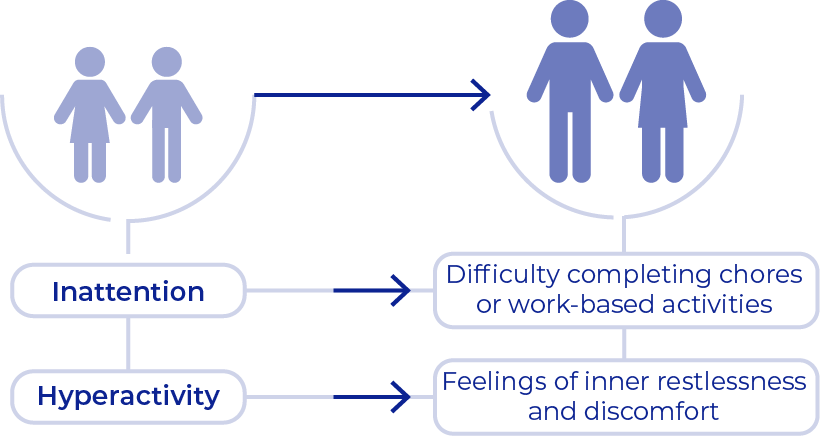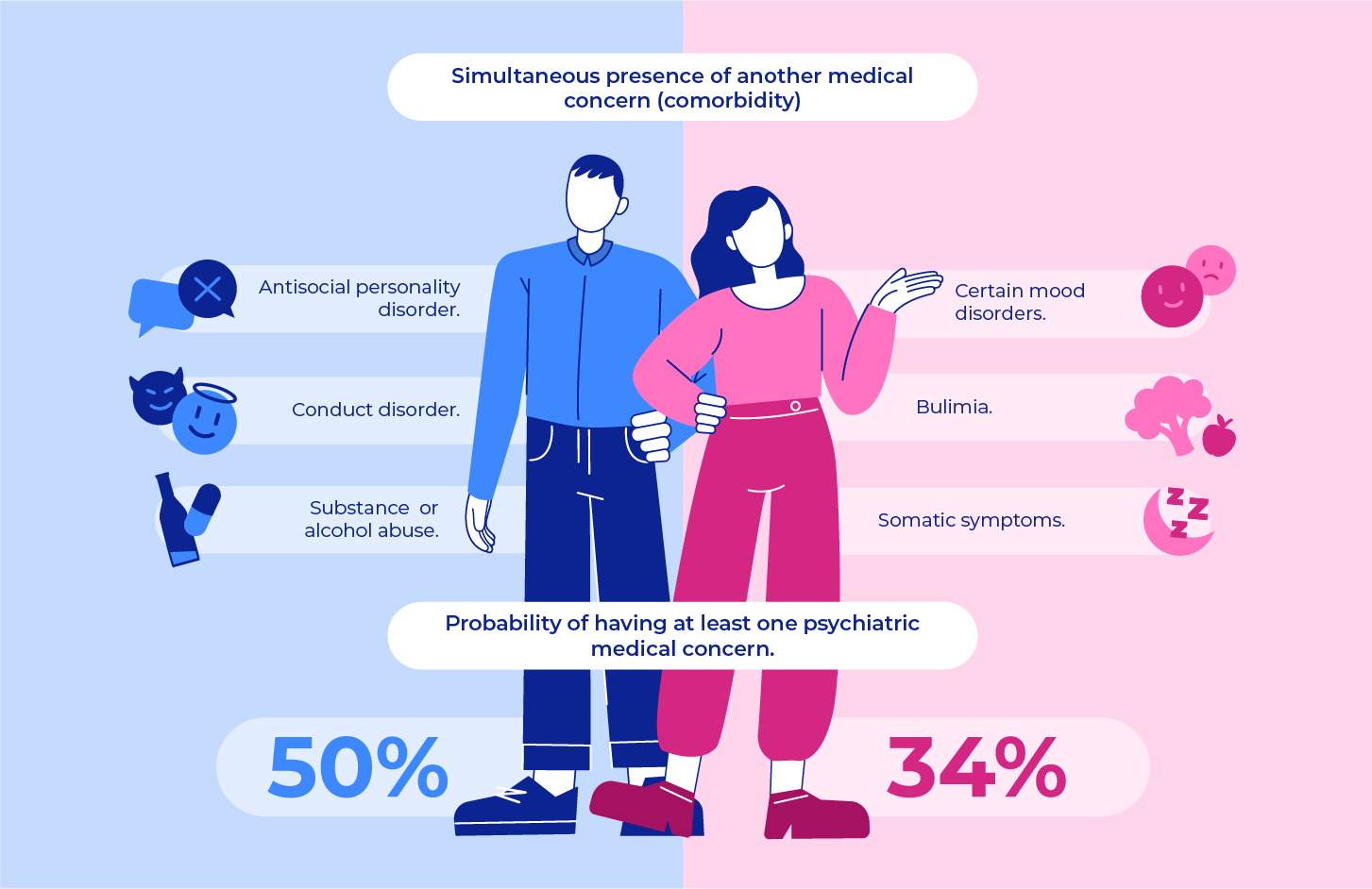Adult ADHD Symptoms

The hyperactivity that can come with ADHD fades further with age. However, the symptoms of ADHD in adulthood still have a significant impact on a person’s life and relationships, both at work and at home.
About ADHD
There are 3 subtypes of Attention Deficit Hyperactivity Disorder
There are 3 subtypes of Attention Deficit Hyperactivity Disorder

Predominantly inattentive
Tends to persist into
adulthood

Hyperactive impulsive
Consistent reductions
with increasing age

Combined presentation
80% persistence into
adulthood
Experiences of ADHD symptoms often
change over the course of development
Experiences of ADHD symptoms often
change over the course of development

pervasive impairment in areas including success and safety at work, interpersonal relationships, executive functioning,
academic outcomes and general
life satisfaction.
With treatment, together you and your health care provider can develop a care plan that may help relieve your symptoms by increasing attention and decrease impulsiveness and hyperactivity, which in turn can help with getting you to a higher level of
functioning.
Common symptoms and behaviours of ADHD in adults:
- Unable to pay attention for a period of time
- Easily distracted by things around you
- Unable to pay close attention to details
- Over-focusing and being unable to refocus your attention
- Making careless mistakes
- Poor time management
- Messy and disorganized
- Forgetting or struggling to complete tasks
- Frequently losing keys, wallet, sunglasses, cell phone, etc.
- Difficulty managing finances
- Fidgeting, finger drumming, leg shaking, etc.
- A feeling of internal restlessness
- Feeling that your mind is racing
- Talking too much or at inappropriate times
- Interrupting or blurting out things
- Problems with driving (speeding tickets, serious accidents, license revoked)
- Frequent accidents/injuries, due to recklessness or not paying attention (e.g., while playing sports)
- Making impulsive decisions (quit job, max out credit cards)
- High-risk activities (abuse drugs and alcohol, risky sex)
- Low self-esteem, feelings of underachievement
- Relationship issues , difficult social interaction, trouble seeing effect on others
Differences between men
and women with ADHD


Detection of ADHD in females



Reasons why girls and/or women
may be diagnosed later than boys
For a long time, scientists insisted that ADHD was
very rare in girls , and even more so in women.
In childhood, teachers and
parents report the symptoms
that they see.
Since girls tend to have the
inattentive subtype of ADHD,
this is difficult to "see".

Less overt ADHD symptoms are more likely to be overlooked by providers.
Girls and women are less
likely than boys and men to
display disruptive behaviours.



